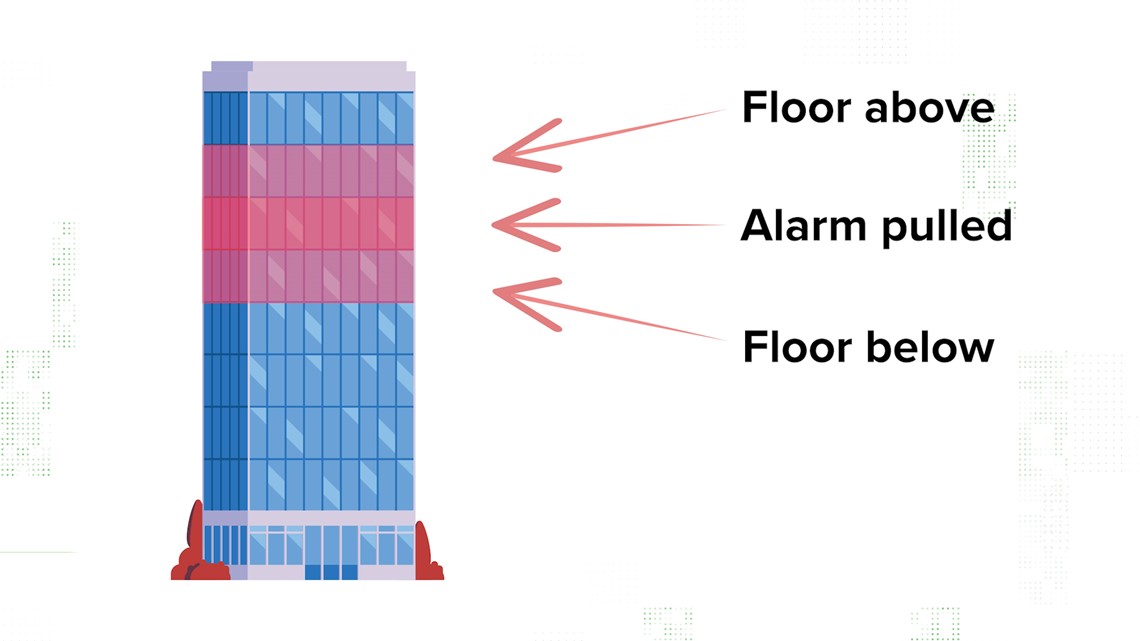In some cases, they are encouraged to.
WASHINGTON — After February's deadly Silver Spring apartment blaze, fire safety is on many people's minds. The Feb. 18 fire at the high-rise complex left 400 people displaced, 19 injured and a 25-year-old woman lost her life. Some of the building's residents claim alarms on their floor didn't go off, until people escaping manually pulled them.
One of our viewers reached out after a fire alarm went off in her office building, but didn’t sound on her floor. The building’s management said that limiting fire alarms is normal; she asked WUSA9 to fact-check the claim.
THE QUESTION
“Is it policy in D.C. office buildings to only sound an alarm on the floor above and below the actual emergency?” - Verify viewer
THE SOURCES
THE ANSWER
![]()
Yes, in DC high-rise buildings with high levels of fire protection, alarms will only sound on certain floors by design.
WHAT WE FOUND
According to a spokesperson for the DC Fire and Emergency Medical Services Department (FEMS), the building code that D.C. follows only requires that three floors sound the fire alarm in many high-rise buildings: the floor where the alarm was pulled, and the floors directly above and below it.
The rule applies to buildings approximately seven stories or higher, and with a “high level of fire protective measures, including sprinklers.” Those protective measures are key, as the policy only works if fire suppression systems are deemed effective enough to contain the fire.
In those cases, FEMS explained that limiting where fire alarms sound is actually in the best interests of people in the building.


The immediate goal of a fire alarm is to get people out of the building and away from the fire. The people who are most at risk are those on the fire floor (i.e. the floor where the alarm was pulled), followed by those on the floors above and below where there is risk of fire and smoke spreading.
Only sounding alarms on those three at-risk floors guarantees that stairways are as clear as possible, meaning people can evacuate faster than if every person in the building flooded the stairs all at once.
The measure also allows firefighters to establish control over the situation. While stairs are important for people to get out, they are also crucial for firefighters to enter the building and bring equipment and personnel to the affected floors. FEMS told us that firefighters will regularly designate certain staircases for evacuation and others for attacking the fire.
That distinction is important, not only to keep things organized, but also to keep people safe. The attacking staircase is more likely to fill with smoke and burning debris since firefighters have to directly access the fire. While fire teams are dressed for that situation, the average person isn’t, so it’s best to direct evacuees down different sets of stairs.
There’s one big caveat though: it depends on the building. Some older buildings in D.C. might not have up-to-date fire suppression systems. In those cases, fire alarms will sound throughout the entire building.
In general, it's best practice to make sure to follow evacuation instructions and listen to the direction of firefighters.
.png)









 English (US) ·
English (US) ·